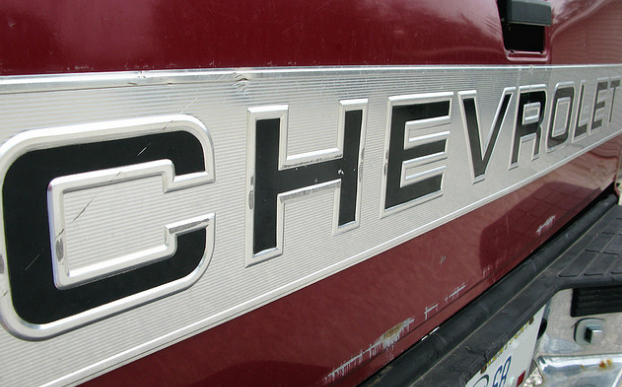NHTSA Closes Five-Year Probe Into 1.8M GM Trucks & SUVs With Brake Failure; Doesn’t Order Recall
After five years of investigating why brake lines in some 1.8 million older trucks and SUVs have a tendency to fail, the National Highway Traffic Safety Administration failed to find a safety defect and plans to close the probe without ordering General Motors to replace the often rusted brake lines.
NHTSA’s investigation, which first began [PDF] in March 2010, covered nearly 1.8 million full-size pickup trucks and sport utility vehicles produced by GM’s GMT800 platform – including the 2002-3 Cadillac Escalade, the 1999-2006 Chevrolet Silverado and GMC Sierra pickups, the 1999-2006 Chevrolet Suburban, the 2000-2006 Chevrolet Tahoe and GMC Yukon, the 2000 GMC Yukon XL and the 2002-2006 Chevrolet Avalanche 1500 and 2500 – that were thought to be affected by an issue causing corrosion of brake lines, often leading to brake failure and subsequent crashes.
According to documents [PDF] posted by NHTSA, over the course of the five-year investigation regulators analyzed 3,645 consumer complaints of brake pipe corrosion failures, including 107 crashes and 40 injuries.
In addition to consumer narratives, the agency also conducted and analyzed field data regarding GMT800 vehicles.
NHTSA determined that while only 20% of all GMT800 vehicles were sold in the salt states – areas of the U.S. where road salt is used during the winter months – a disproportionate number of complaints came from those regions, leading investigators to make a strong correlation between the issue and the vehicle’s age and region of use. In all, 2,702 of the complaint, 88 of the crashes and 20 of the injuries were reported in those vehicles.
For vehicles with less than 8 years of service, the complaint rates were minimal for all regions. In the salt states the failure rates begin to climb as the vehicles advance in age, particularly in the Northeast corner of the United States. The complaint rates in the salt states go from less than 0.1 incident per thousand vehicles (IPTV) at 7 years in service to over 1.0 IPTV after the 12th year of service for the subject pickup trucks and utility vehicles.
Despite the connection, investigators did not identify any specific defect conditions that caused or contributed to the brake pipe failures.
Instead, the investigators determined that many of the brake corrosion failures appear to be a result of the normal expected wear out of pipe coating material used in the vehicles, and not due to a problem in production.
“The agency will monitor this issue and reserves the right to take further action if warranted by the circumstances,” NHTSA states in its closing documents [PDF].
In lieu of issuing a recall order, the agency encourages owners of model year 1999 to 2007 Chevrolet Silverados, Tahoes and Suburbans; GMC Sierras and Yukons, and Cadillac Escalades to have their brake lines inspected and to wash their underbodies after each winter season.
By closing the investigation without ordering a recall or finding a safety defect, NHTSA places the cost of maintaining and replacing the brakes squarely on the consumers.
Back in 2013, GM previously released developed a parts kit for the brake lines.
“These are available through dealers and the aftermarket,” a spokesperson for the company tells the Times. “Based on time studies, the repair including labor should cost about $500. We can only suggest how much labor time the repair should take.”
Still, some consumers continue to report that out-of-pocket costs to fix the issue can exceed $2,000.
Wednesday’s announcement by NHTSA brings to an end one of the agency’s longer running investigations. NHTSA began investigating the problem after receiving a formal defect petition [PDF] asking regulators to look into widespread stalling issues.
“In particular, our 2003 Chevrolet Silverado 2500HD 4WD pickup truck…experienced hydraulic brake failure at 51,848 miles due to corroded brake lines bursting. The lines burst in an area that was weakened by corrosion and field under normal usage and brake line pressure. There was no indication to the driver that failure was eminent and only fate precluded any injury, as the vehicle was traveling slowly with a load of hay in the bed.”
At the time the investigation was first opened, NHTSA reported receiving at least 110 owner complaints alleging loss of braking effectiveness due to brake line rupture because of corrosion. Three of those reports involved crashes. A preliminary evaluation was opened to determine the frequency, scope and safety consequences of the alleged defect. However, no recall was issued.
During the preliminary investigation, NHTSA reported that officials with GM said the vehicles were equipped with dual brake lines, meaning that “should a brake pipe suddenly fail for any reason, the affected vehicle would be capable of stopping with the pressure supplied by the remaining circuit.”
Additionally, the manufacturer said if any type of brake fluid leak were to occur the system malfunction indicator would illuminate.
However, consumer complaints continued to cast doubt on GM’s statements.
Nearly a year later, in January 2011, NHTSA opened an engineering analysis of the issue [PDF]. By that time the agency had received 890 complaints, 761 of which were located in the so-called “Salt Belt states” – areas in which salt is routinely used on roads during the winter months.
Again a majority of the complaints alleged the failure occurred suddenly with no warning to the driver and resulted in extend stopping instances. Twenty-six of the reports resulted in crashes, while in 10 other cases the vehicle was intentionally steered off the road or into another lane to avoid a crash.
Want more consumer news? Visit our parent organization, Consumer Reports, for the latest on scams, recalls, and other consumer issues.


